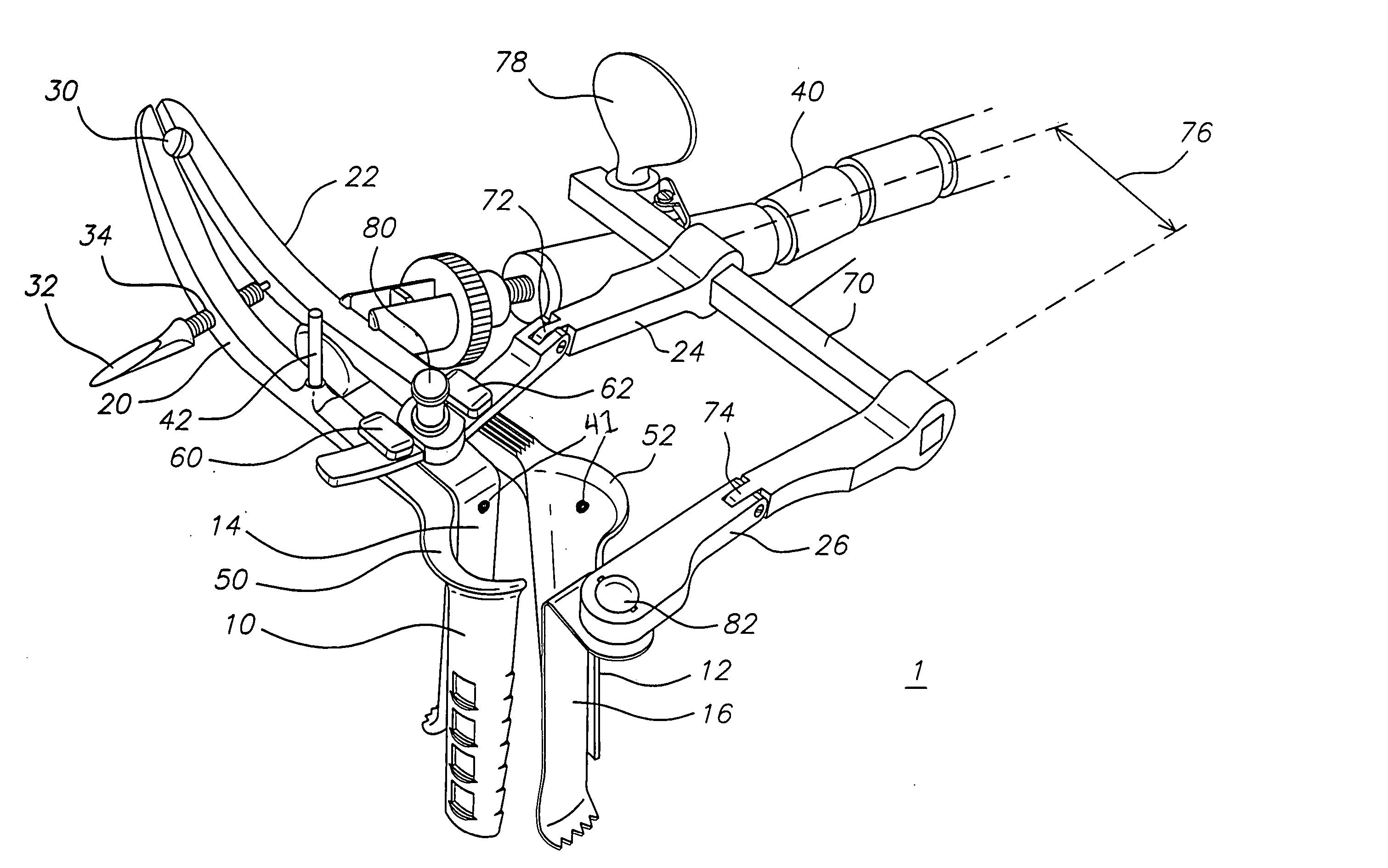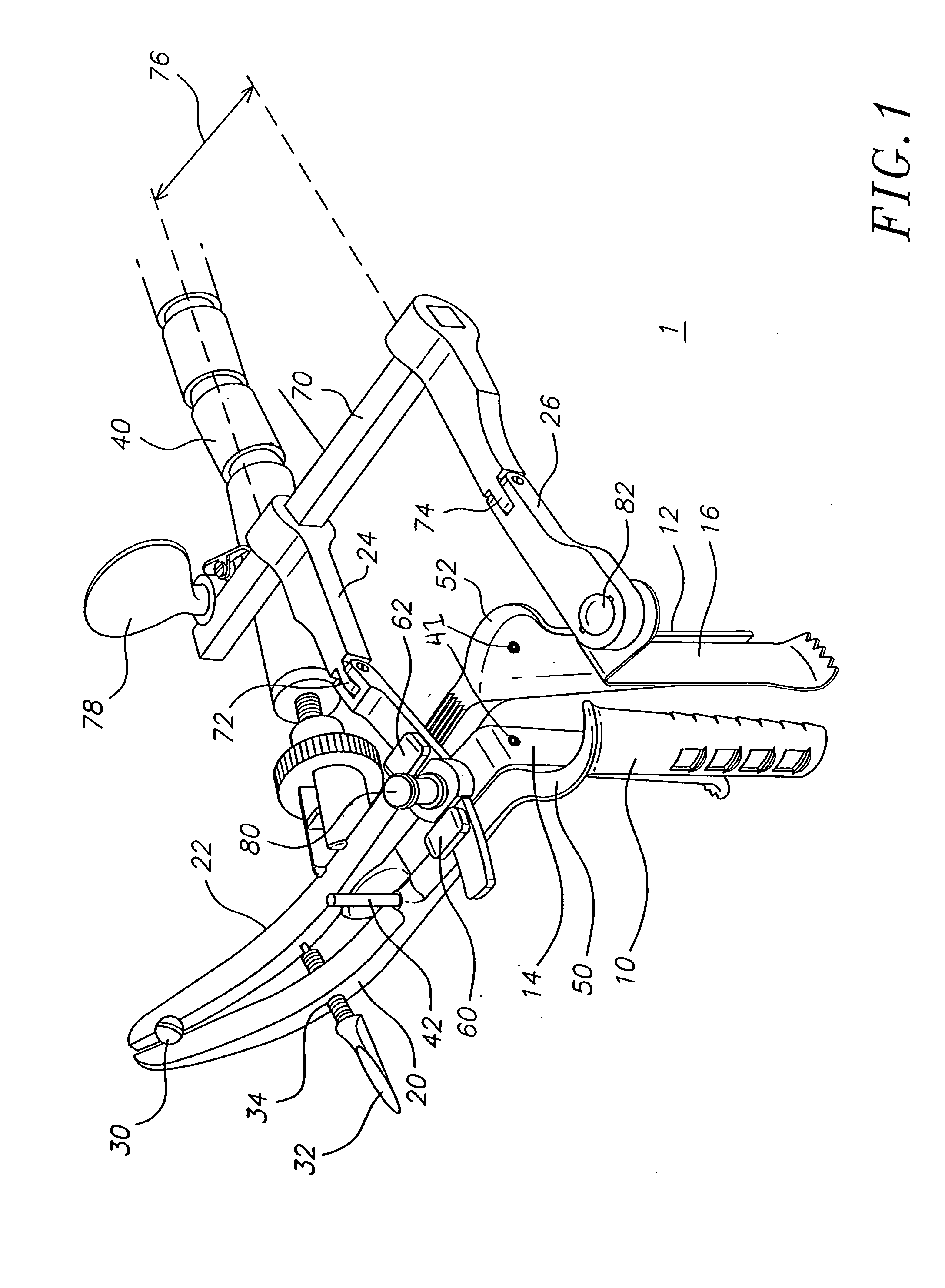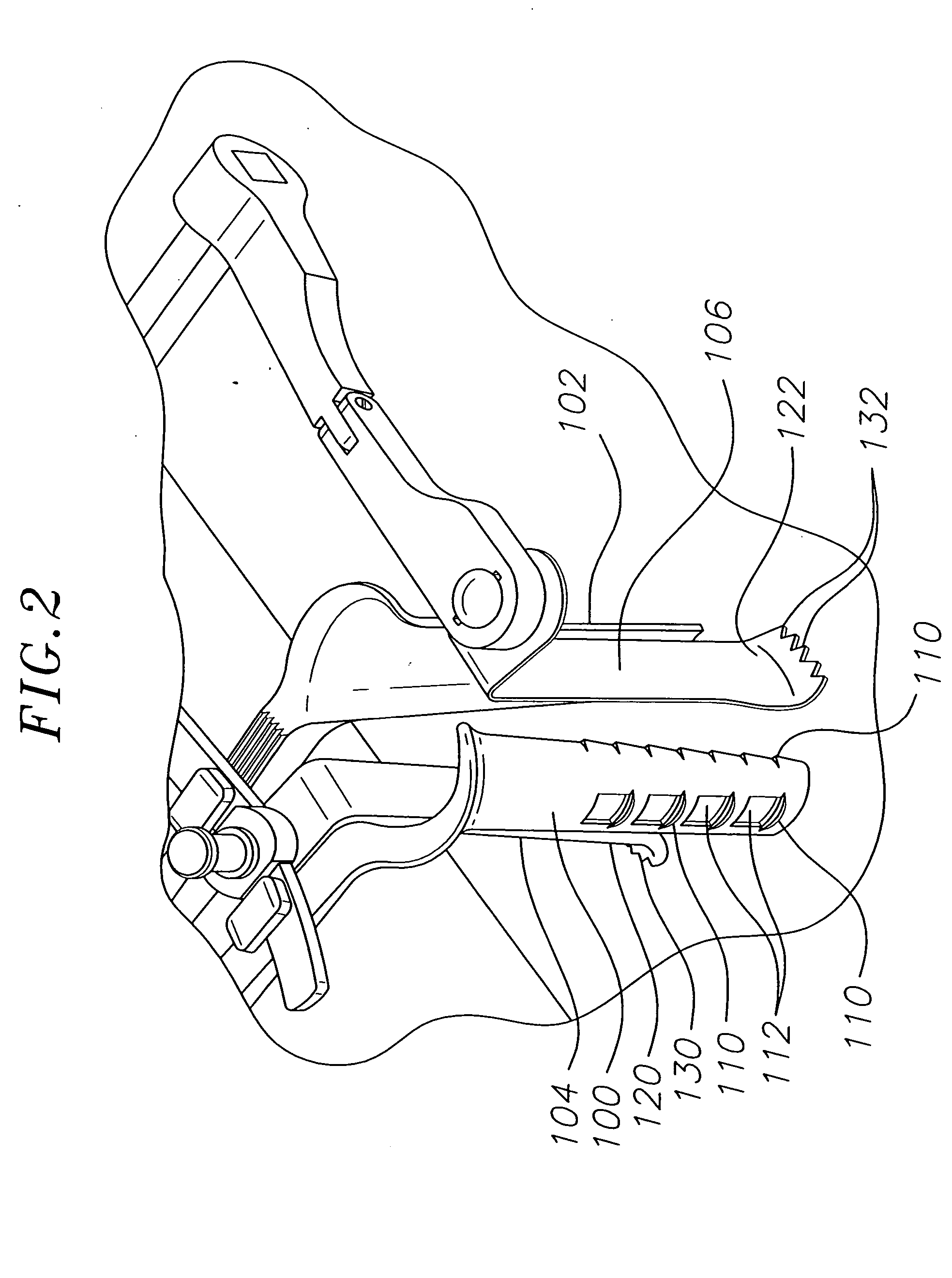Four-blade surgical speculum
a speculum and speculum technology, applied in the field of speculum system, can solve the problems of rigidity of the speculum, damage to the lens of the endoscope, and inaccurate depth of the endoscope, and achieve the effect of effectively illuminated or viewing an area, convenient surgical approach, and convenient inserting of the speculum
- Summary
- Abstract
- Description
- Claims
- Application Information
AI Technical Summary
Benefits of technology
Problems solved by technology
Method used
Image
Examples
Embodiment Construction
[0019]FIG. 1 shows an embodiment of a speculum system 1 with four blades 10, 12, 14, 16 attached to four handles 20, 22, 24, 26. The first and second handles 20, 22 are attached by a hinge 30 and curve upward. It is also within the scope of this invention for the handles 20, 22 to be straight. Although the handles may be designed with a fixed distance therebetween, in this embodiment, a screw 32 is threaded through a hole 34 in the first handle 20 to push against the adjacent solid surface of the second handle 22. This screw 32 thereby sets a distance between the first and second handles 20, 22. Any other mechanism for distancing the first and second handles 20, 22, such as a latch, variable spacer, or the like can also be used.
[0020] Again, although not required in this embodiment, an optional stabilizing arm 40 grips the second handle 22 to stabilize the speculum system 1 to a fixed position. The stabilizing arm 40 may alternatively grip onto any other suitable portion of the spe...
PUM
 Login to View More
Login to View More Abstract
Description
Claims
Application Information
 Login to View More
Login to View More - R&D
- Intellectual Property
- Life Sciences
- Materials
- Tech Scout
- Unparalleled Data Quality
- Higher Quality Content
- 60% Fewer Hallucinations
Browse by: Latest US Patents, China's latest patents, Technical Efficacy Thesaurus, Application Domain, Technology Topic, Popular Technical Reports.
© 2025 PatSnap. All rights reserved.Legal|Privacy policy|Modern Slavery Act Transparency Statement|Sitemap|About US| Contact US: help@patsnap.com



